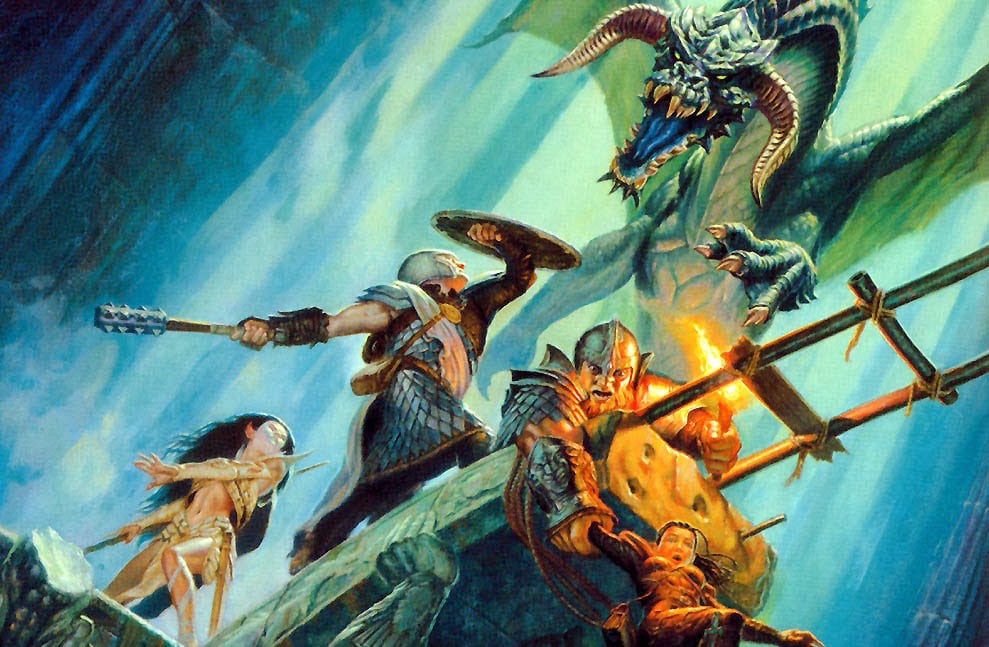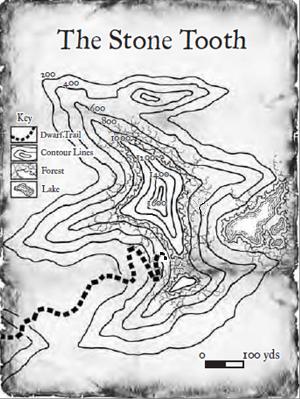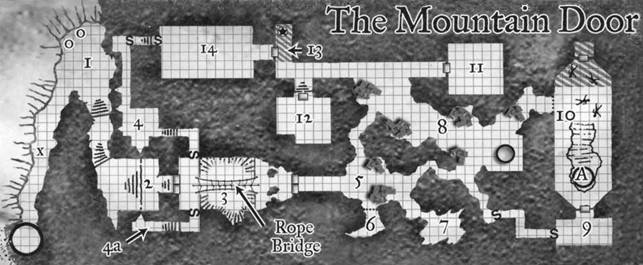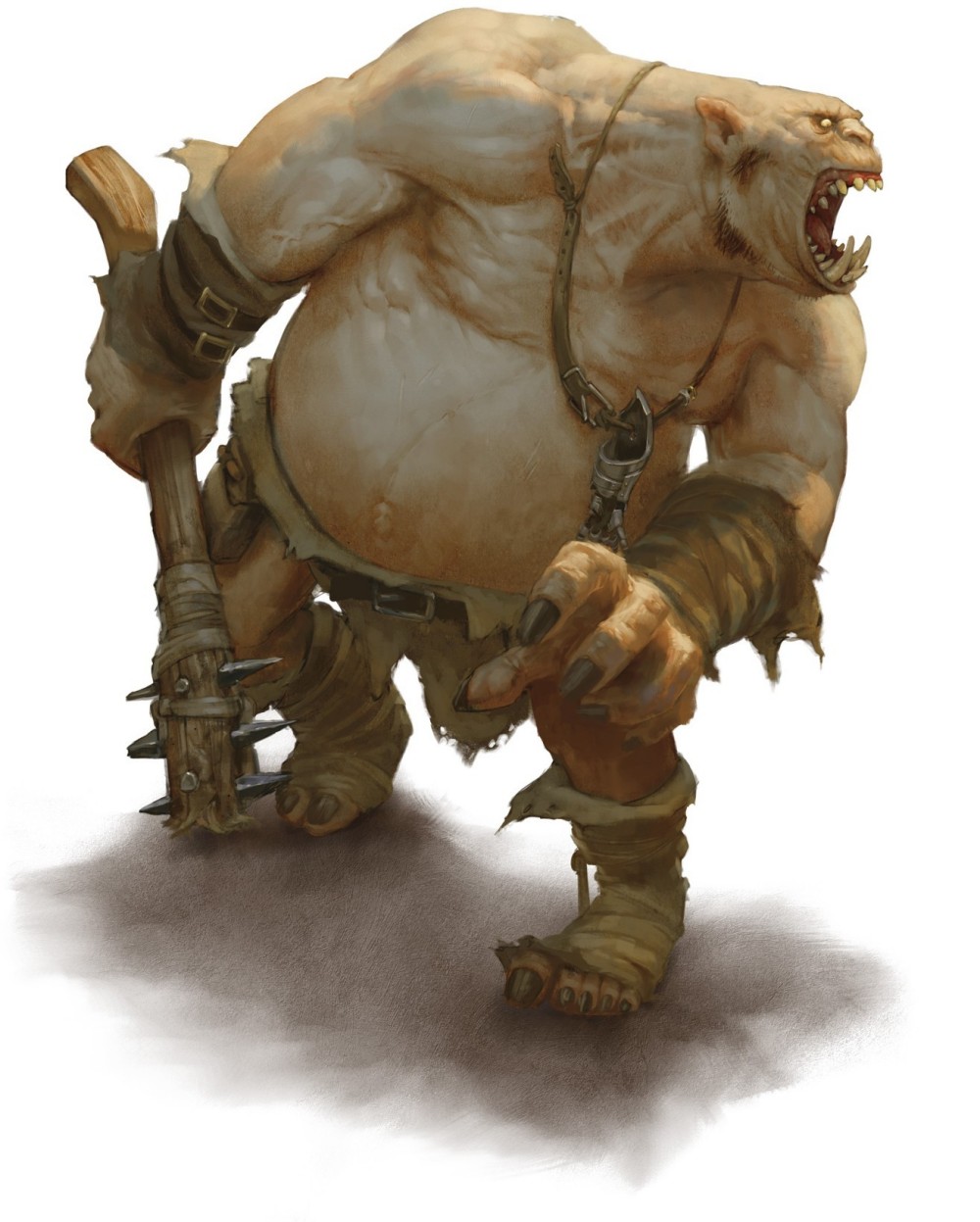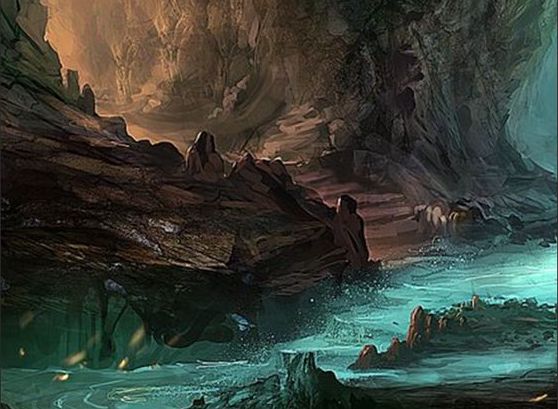D&D: Let’s Make More Dungeons In 2019


It’s the start of a new year, and one of the new year’s resolutions we have around the office is to make more dungeons–and presumably, dragons–in the coming year. So kick the new year off with some creativity and a look at one of the most underrated dungeons out there.
That’s right friends, it’s that fabled golden week in January, when the year hasn’t fully started crushing your spirit with its weighty obligations and dreary doldrums of having to pay bills, feed yourself, and drag your flesh vessel across the surface of a rapidly spinning celestial body, hurtling through space too fast to be detected even though you’re on it, which the more I talk about it, the more everyday life sounds pretty radical and less everyday.
Which is probably a great attitude to keep in mind, but it does undersell the joke of the new year being a time to join a gym and never go, to say you’ll do seven different things and be lucky to do one–but heck with that. Forget the joke, we’re living on an improbably perfect space rock and have sapience enough to be creative. Let’s celebrate by making pretend dungeons for heroes to fight dragons in.
The Forge of Fury is a great place to jump start that–there’s a lot going on in this dungeon. It’s a living, breathing place to play around with, it’s a great blueprint for DMs that teaches you as you play. It adapts and changes based on the actions of players, and it’s a perfect principle to kickstart your design with. And it languishes in the middle of the Tales from the Yawning Portal, nestled between some dungeons filled with flashier magic items, or lower leveled–but this one is a fantastic experience that will, today, help us make some dungeons people. So grab your torch and your ten-foot pole, let’s see what we can learn from it, and check back often when we start making our own.
One of the stand out things about the Forge of Fury is that it’s designed to be tackled more than once–it’s meant to feel like a challenge that the players need to solve. When players initially approach the dungeon, they may be overwhelmed and forced to retreat, which is great because this is a chance to incorporate failure into the game without it ending the campaign. But even if the PCs don’t get rebuffed and simply explore then return to base camp, the dungeon will still be different upon their return.
Here’s a bare bones refresher on our particular “dungeon design” philosophy from an earlier article: each room in a dungeon is an encounter with a few different parts. combat (any monsters or whatever you fight), narrative (how does this fit into the story), puzzle (any thinking things), and reward (what do you get out of exploring here). These will be highlighted to different degrees in each room, but in general you’ll want 2 or 3 of these elements present in each room to some degree.
So keep all that in mind as we dive into the Forge of Fury.
The Forge of Fury
The Forge of Fury is a followup to the Sunless Citadel, one that sends the now-more-experienced band of heroes off to the ruined dwarven fortress of Khundrukar in search of a bunch of masterful blades forged by a dwarven smith. But before they can retrieve the blades, they’ll have to get to the fortress. And that means getting through the Mountain Door.
The Mountain Door is the upper level of Khundrukar. Players will have to navigate its orc-filled halls (probably, see below) in order to get to the duergar-filled halls of the fortress proper.
The Mountain Door is a natural cavern that was expanded and improved upon by Durgeddin’s folk, who created a series of halls and guard chambers that protect the entrance to their realm. The place is still well fortified, even to this day.
The former dwarven strongpoint is now occupied by a band of orc raiders, led by a fierce ogre who calls himself Great Ulfe. These raiders emerge from the Mountain Door to hunt and pillage in the surrounding area. o keep their lair secure, the orcs have blocked access to the lower levels of Khundrukar, and they rarely encounter the other denizens of the cave system.
Now it’s possible for players to skip this section of the dungeon–as the players approach the Stone Tooth (the mountain part of the mountain door), there are several entrances they might take.
Highlighted on the map there is an obvious path that leads right to the Mountain Door. It’s the main entrance… but players will also notice a thin spire of smoke, rising up from somewhere on the hill’s slopes. Now in the description, the smoke appears to be coming from within the mountain, and players can make an easy (DC 10) survival check to notice four tracks that have recently left the mountain–so there are a lot of cues to lead players to the door–which is important. These cues help players hone in on where they’re “supposed” to go while still letting them feel like they’re exploring/solving the puzzle of ‘where is the dungeon.’
But, if they decide to explore, they will find a steep hillside that slows them down and is blocked by heavy woods. There’s another DC 10 check to keep from getting lost, so there’s some effort in trying to find the source of the smoke. A third check leads players to the source of the smoke, or those with a passive perception of 15 will notice it if they find it. This is one possible entrance for players (the second most obvious one). Players can then descend into the middle of the Mountain Door (and may have a hard time fighting their way out).
But even more curious players still might find a hidden third option. They’d have to want to explore the mountain thoroughly (and with two possible solutions presented to them already, their curiosity may be sated), but if players wander onto the Eastern side of the mountain, they could find the tunnel the orcs dug centuries ago when they overwhelmed the dwarven defenses. This leads past the Mountain Door entirely.
There is one final entrance to the dungeon complex, though it is likely not one the players will use until they are within it. There is a lake that contains a subterranean tunnel that takes them all the way to the final rooms of the dungeon–but players using it will need water breathing.
Each of these entrances leads into the dungeon and is a reward for players who explore–they might encounter some of the harder fights without having to expend resources–but they also exist for a reason. The orcs dug a tunnel, the underwater passage was created by the Black Dragon that serves as the boss for this adventure. They all paint a picture of a living world and show how even something like the entrance to the dungeon can fulfill the “narrative component” of an encounter.
The Mountain Door
Most likely, though, players will follow the path and approach the Mountain Door. This takes them to a cavern:
The path climbs up one last steep switchback toward a bare shoulder or rock. The hillside rises steeply on your right and drops away precipitously on your left. Debris and rubbish lie scattered over the last hundred yards or so–discarded water skins, bits of charred bone, and splintered casks or kegs. Up ahead, the path opens onto a wide ledge and then doubles back sharply into the mountainside.
Two bestial humanoids in hide armor stand watch on the ledge. They appear inattentive and bored.
That last part is the most important. It’s another clue to the adventurers about what the dungeon is expecting of them. Why mention specifically that they are inattentive and bored? To stir up the idea that maybe these guards don’t have to be fought head on. This is important–there are several times throughout the dungeon where players can get by on stealth or diplomacy, so raising this idea before the players are even in the dungeon gets them thinking about it, if only subconsciously.
The thing that kicks everything off is the two orcs, Wark and Thark, who are actively complaining about their jobs and at a -2 passive perception, making it 8 (incidentally, this is a nice little clue for the GM–oh hey the players might want to sneak past). Alone, they aren’t much of a threat. Orcs are CR 1/2 and the whole adventure is recommended for players of 3rd level, so really a couple of orcs is not much of a combat challenge. Which is why they flee as soon as more than one character approaches.
They shout out an alarm and then immediately flee into the Mountain with the express purpose of raising as much alarm as possible. Over the next twelve rounds they alert a grand total of 15 orcs, an ogre, an orog, an Eye of Gruumsh, and a pair of Dire Wolves, who all react to try and defend their home.
That is an overwhelming force for a 3rd level party, but I think it’s there to be. They trickle in slowly enough that the players won’t necessarily encounter them all at once–and what’s more, the orcs are trying to defend their place, but they do so in a way which lets them attack the PCs without themselves being threatened. In area 3 on the map there’s that rope bridge–by round 5, the orcs will cut it down. By round 3, an orc from one of the adjoining rooms will close and bar the door leading into the bridge to try and buy them some time. And since the barred door requires a DC 20 strength check to get through, it’s possible this alone might repel the PCs.
It’s a complex encounter that encompasses a combat component (all the orcs) a puzzle component–if you look at areas 4 and 4a, they are two adjoining rooms which have arrow slits that allow 4 orc archers to pepper PCs in areas 1 and 2 with arrows as they try and make their way inside. Look at how the arrow slits are placed–they’re there to allow for more fire as the PCs get closer to the door. They’re also protected by two secret doors–so players might not be able to return fire at the archers.
Also worth noting is the placement of the secret doors. They are on the other side of some massive double doors. On round 3, assuming the orcs have been alerted by either the noise of fighting or Wark and Thark running past screaming their heads off, one of the orcs moves to close the door and bar it, keeping the players out. This alone might be a deterrent. But even if the orc can’t stop the players, there’s still two DC 15 perception checks needed to find and open the doors. There’s another wrinkle to the puzzle component of the encounter. Searching for the secret doors lets them deal with the archers–it also gives enterprising PCs another opportunity to find a secret door–though this one is harder. At DC 18, it’s only going to be found by people who invested in the Perception skill–but it leads deep into the heart of the Mountain Door.
Moving back to area 3, for now though (because that’s where the PCs have been). Note the rope bridge, which can be easily cut by the orcs. The rope bridge is another part of the puzzle component, requiring a DC 10 acrobatics check to cross (at half speed, and with the risk of a fall) and while they’re in there, the orcs that have been alerted try and harry their foes with javelins, which forces PCs to reconsider crossing the bridge–a hit from the javelins forces them to save or fall. This is a DC 10 Str or Dex save, so odds are good people will make it, but if they fail, they fall into the underground river and will be swept away–again this isn’t necessarily a fatal fall (though it might be) but its main purpose is to carry characters away from the mountain door and further into the dungeon.
There are two orcs here as well–so assuming the PCs have alerted Wark and Thark, they have a total of 6 orcs to face (though they may well retreat) for about 8 rounds. The orcs try and pepper the PCs from a distance, while avoiding engaging with them directly–they’re there to buy enough time for the orcish counterattack to muster (On rounds 8 and 12 respectively).
And the whole encounter is itself a narrative component. The orcs are using this place as a bandit lair–the PCs that tromp through will find refuse from the orcs, including smashed kegs and remnants of food–the orcs have been living in this place a while. They know its ins and outs (but not all of them), but enough to make this place feel like it actually belongs in the world.
Then there’s the way it changes.
Earlier I mentioned the idea of a living, adapting dungeon. If the PCs are driven off they will return and find the dungeon has changed. In each of the entries there’s a listing for “developments” which shows how the dungeon changes based on the PCs actions. For instance, at the initial entrance area, after the PCs return, they’ll find that the orc archers have been reinforced (and replaced if any were slain), with the Eye of Gruumsh who uses her spells to give returning PCs a hard time.
The same thing happens even if the alarm isn’t raised and the characters defeat these orcs, but then leave the dungeon (to resupply, for instance) and return. Which is great–the orcs notice their forces are depleted and they take action. But–there are only so many of them. The orcs have a place they’ve come from, and that they’ll move to–a routine that gives them enough character to feel like they aren’t just stumbling blocks through the dungeon.
The other thing worth noting about this section is that it all depends on the characters blundering through. There are a few hints up front that signify, oh wait maybe you should try and be sneaky here–Wark and Thark aren’t super attentive, the orc archers might not notice the characters, only firing once they’ve spotted them, etc. It’s possible for careful players to sneak through the dungeon without raising the alarm, and if they can manage it, it breaks the orc encounters into much more reasonable chunks.
Chunky encounters, made by folks in San Antonio who know what encounters should feel like…
This has the manifold benefits of teaching the players to try different tactics, and encouraging them to learn from their application. As I said, the whole encounter is kind of like a puzzle–it’s too difficult for the characters to face all at once, so it’s in breaking the encounters up (and avoiding them when possible) that the characters “learn” how to fight.
Plus the orcs have a ton of character. Wark and Thark are grumbly, Ulfe is the ogre boss who with his dire wolves and vague megalomania. The orog is called old yarrick and is the cunning advisor to the orcs (sort of). Of particular interest here: if the characters manage to defeat Ulfe, but there are still orcs left alive, one of them will take charge and lead a reduced number of orcs against the party (should they return).
And then of course, going through the rest of this section there are still all manner of interesting things for the PCs to find even after all the orcs are slain. There are fire traps, gas traps, secret doors, hungry stirges and more.
All of which is punctuated by dwarven decor to reinforce the idea that the PCs are progressing. I love this because it invests the characters in their success–I think it’s a great “failure” moment, which can make it easier for PCs to learn to retreat and come back. It’s kind of more rewarding if they do–the encounters change and are interesting. And if the players should fall, there’s even a backup safety mechanism built in. Take a look at the entry for room 6: It’s been changed into a prison by the orcs, but under the developments section it mentions–any characters captured by the orcs wind up in the cage. So right there’s one last out to prevent a TPK/game over for the players. But it’s one that makes sense and will naturally lead to more adventure, which is the best way to use failure in a game.
Anyway, the rest of the dungeon is also fantastic, but we have enough of a takeaway for now. So when you’re designing your own dungeon, try and think about who’s using it and why–and then think about how they might react to the PCs. Of course the best thing about having an actual living DM is that you can change things on the fly, but it helps to have a plan from which to deviate in the first place.
Thanks for sticking around, I hope you enjoyed this. If you got something good from this, let me know. Same thing if there’s a particular dungeon or module you’d like to examine.
In the meantime, be sure and check out Wark and Thark in their production of ‘Waiting for Godot’ now playing on a mountain ledge near you…

